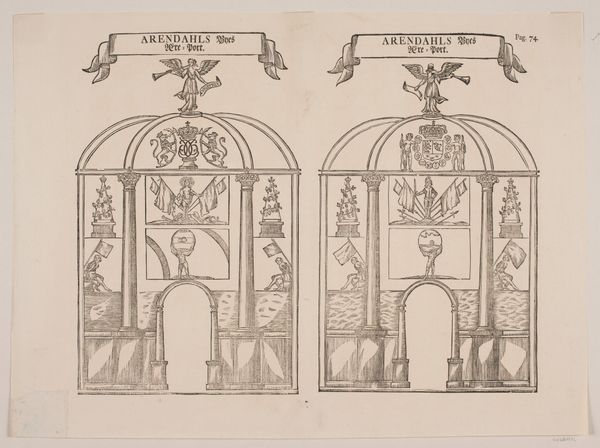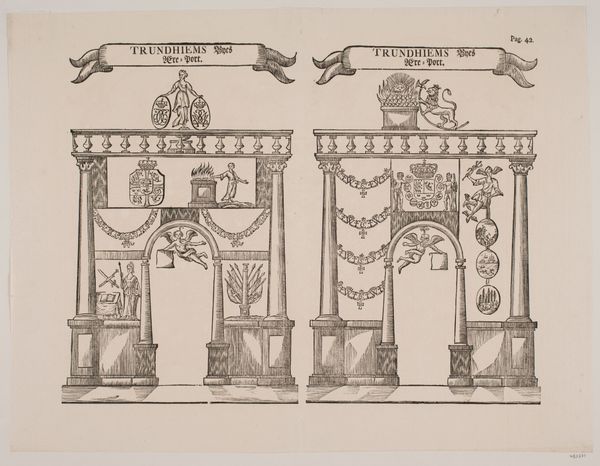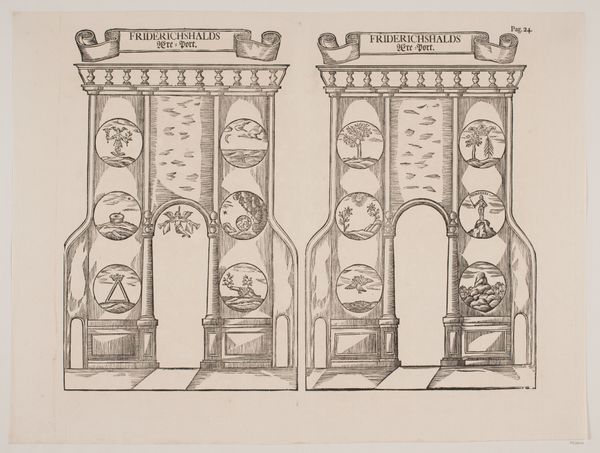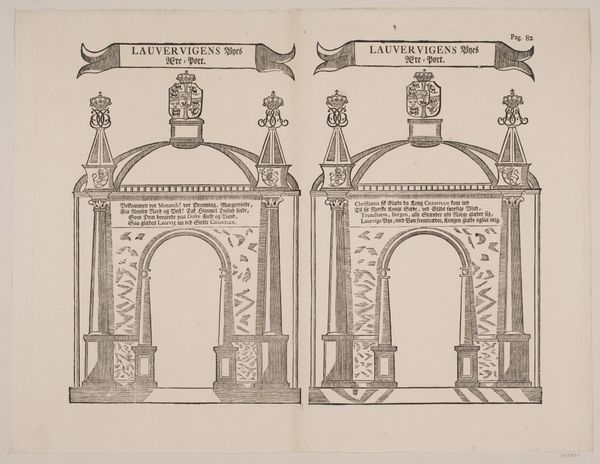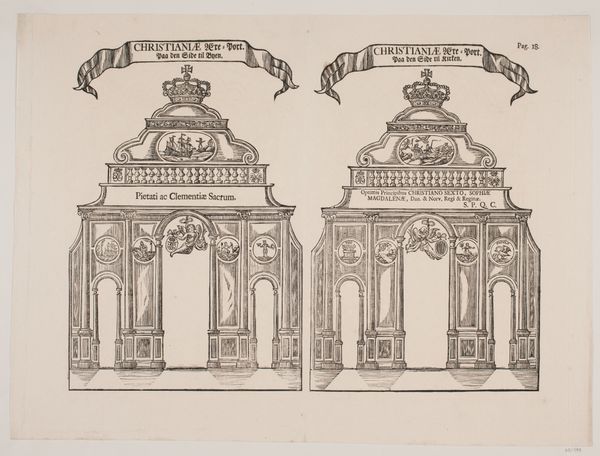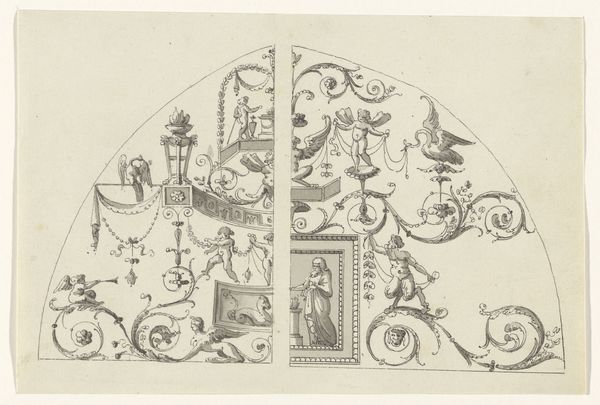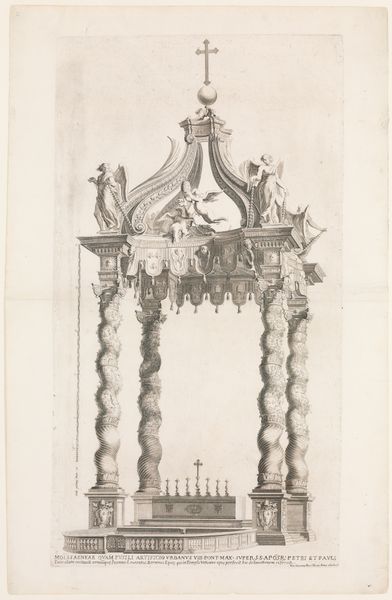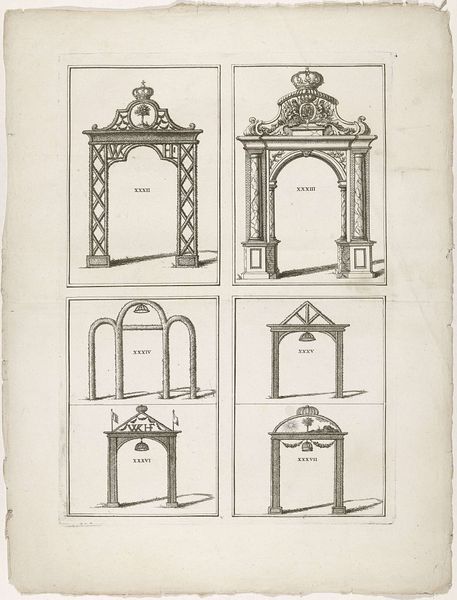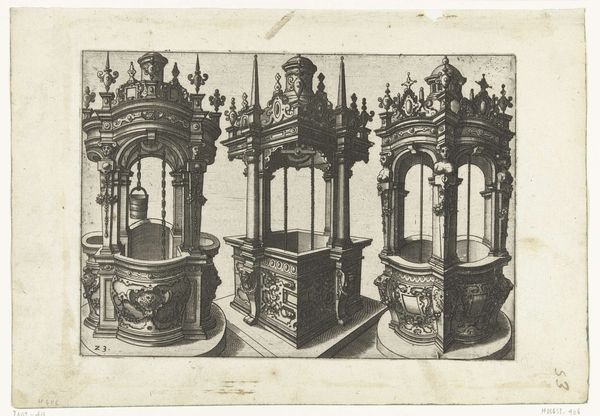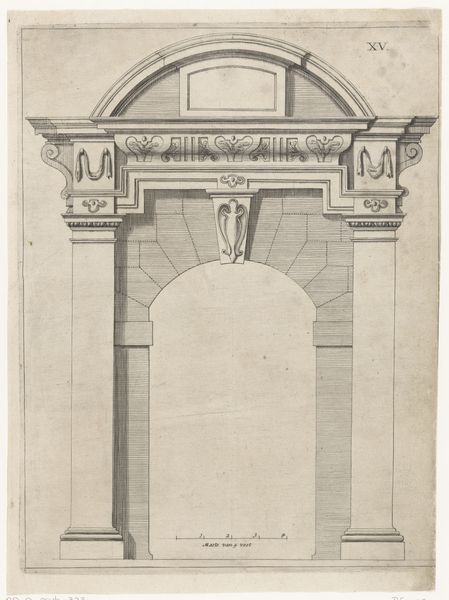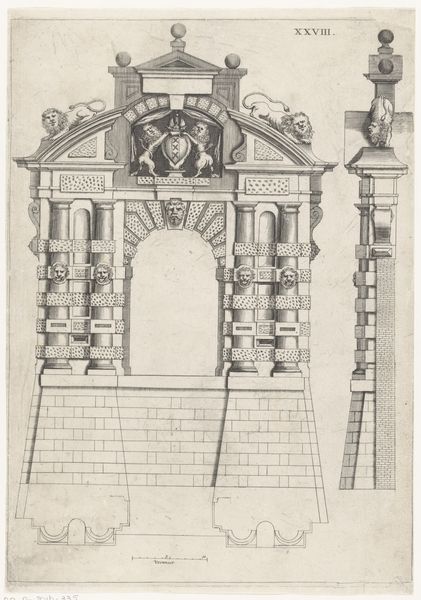
drawing, print, ink, engraving
#
drawing
#
baroque
# print
#
etching
#
ink
#
history-painting
#
engraving
Dimensions: 365 mm (height) x 480 mm (width) (bladmaal)
Editor: This engraving, "Christianssands æresport", which translates to "Triumphal arch of Christianssand," dates from the 18th century and is currently at the SMK in Copenhagen. It looks almost like a blueprint for two monumental gates. What can you tell me about what this print is conveying? Curator: Ah, yes, what stories do architectural drawings tell, eh? This Baroque piece is so much more than lines on paper. Picture this: you're strolling through 18th-century Christianssand. This print is essentially a proposition – an architect’s vision for a grand welcome to the city. Notice the dual arches; think of it as an artistic diptych, maybe representing two distinct aspects of the city's identity. One side feels more...martial, crowned with weaponry. The other, a bit more trade-oriented with that beautiful little ship atop. Editor: Interesting! The contrast wasn't immediately obvious. What’s the story with all the little picture panels within each archway? Curator: Good eye! Those little panels, you see, they’re loaded with symbolism. Crowns, cannons, ships – each one whispering a tale of the city’s power, trade, and history. It’s like a visual poem about Christianssand, declaring its importance and aspirations. And, it has me thinking about the idea of creating monuments for the sake of commemoration, you know? As though the stones could somehow possess our collective memories and communicate across centuries...do you see that too? Editor: Absolutely, I guess that's the role this type of piece takes! Looking closely now, each section does seem to point to different characteristics. Curator: Exactly! We, now, centuries later, are able to perceive this city, from a different position than it was initially conceived for. Isn’t it peculiar how art becomes this temporal mirror reflecting, not just what *was*, but how *we* see what was? Editor: I think I'm starting to see this piece a little more imaginatively now. Thanks so much!
Comments
No comments
Be the first to comment and join the conversation on the ultimate creative platform.
